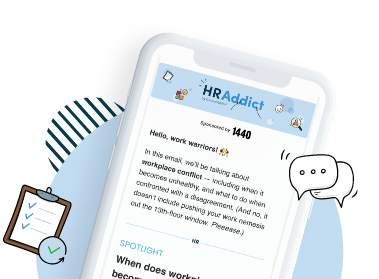In any company or organization, there is a degree of hierarchy when it comes to roles. There will be a person right at the top, managing the department or company, and feeding down will be roles descending in responsibility. In this article, we will take a closer look at different job levels, including what they are, what is expected at each level, the benefits of having job levels and how to create a job-leveling system.
What are job levels?
Job levels are categories of leadership and authority within a company or organization. Each level comes with a pay rate, responsibilities, and title that is more advanced than the level below. At each level, there may be several roles which share these characteristics.
Typically, the people at any level will report to the people at the level above. This is not always the case, but organizations are generally structured in layers to distribute responsibility so that it doesn’t all fall on the person at the top. These can also be called job bands or position levels, depending on the company you work for.
Types of job levels
Job levels will vary in name across organizations, but regardless of the terms used, they will generally follow the same structure. Smaller organizations may not have an employee for every level.
1. Entry-level
Entry-level is the bottom rung of the company ladder. Depending on the organization itself, entry-level would usually consist of staff members with low or no qualifications, or very little experience. Often, people start off in an entry-level job and look to move up the levels once they gain experience or complete their studies. Examples of entry-level roles may be a receptionist, or an admin assistant in a large firm.
2. Intermediate
Intermediate level employees are a step up from entry level and tend to be qualified to degree level, trained in a certain area, or experienced within the company or role. This level rarely comes with management responsibility, but offers more autonomy than an entry-level position. An example may be a project co-ordinator or project assistant.
3. First-level management
First-level managers are well known to the staff in an organization, because they take an active role in the day-to-day running of the company, whereas top and mid-level managers may not be so visible or may not even be based on site.
Someone of this level may manage both intermediate and entry-level staff. Examples include team leaders and senior managers.
4. Mid-level management
Middle managers sit neatly between executives and first-level managers. They filter down strategy and information from above, but take a specific management responsibility for a department or area of specialism. They typically manage the first-level managers who are more in the field, or they are responsible for whole teams of people at first-management level. Examples include a director or regional manager.
5. Top-level management
The top level of management is your C suite. These are the CEOs, COOs, CFOs and any other positions that make up the executive team. Right at the top, you will find a CEO or Vice President. This will vary according to the size of the company. A large company may have a large executive board, but a smaller company may have a single person at the top level.
However, many make up the top level; this is where the big decisions are made, as essentially, these people run the company. They set the vision, raise and oversee funds, attract talent and develop high-level strategy. Someone at this level may have worked their way up from lower levels within the company or been recruited to the position.
While this level leads the company, in terms of direct management responsibility, they tend to manage the top-level management category directly below them.
Why job levels matter
Creating a job level structure within a company, as part of your HR strategies, holds many benefits. Below are some reasons why you may want to implement levels in your organization:
1. They improve pay equality
Levels mean there need not be discrepancies about pay. Each level comes with a set pay scale, so everyone is treated equally at said level. This falls into line with US legislation; “Equal pay for equal work.” The Equal Pay Act of 1963, signed into law by J.F.K, aimed to bring equal pay regardless of sex. Although this act was created with good intentions, many women still have to fight against the gender pay gap, and therefore, having job levels reduce the risk of any pay disparities.
2. They create boundaries
Having levels gives a clear distinction of where one person’s responsibility ends and another’s begins. There are no blurred lines about who does what. Each level comes with a defined set of responsibilities, and everyone knows where they stand and what is expected of them.
3. They create a common language
When everyone is clear about what everyone does and at what level, it’s easier to discuss positions and the communicate expectations. It also creates a sense of understanding among colleagues, as each individual knows the responsibilities and terminologies used by each role and understands their own.
4. They create mentoring opportunities
When levels are defined, there is a clear structure to adopt mentoring programmes, with people in more senior positions mentoring those at a lower level. This can be extremely rewarding for both the mentor and the mentee and provide more opportunities to grow and progress within the organization.
5. They improve motivation
Having levels within a company can increase employee motivation. Knowing there is something to aim for and the potential for promotion gives people a challenge and something to work towards.
Biron Clark, Founder of CareerSidekick, says: “Job levels and titles give employees a clear understanding of the structure in an organization. This motivates them, as they can see a path to advance their career within the company.” Not having room to grow within a company or being recognized for your contribution can have the opposite effect, and can be very demotivating.
6. They help retain top talent
This goes with the point above. Having levels means there can be a clear route for progression. Top talent will have the option of progressing through the ranks rather than gaining experience and moving on to another company for something better.
Clark continues, “If someone joins a company as a marketing associate, and they see that there are also people working as senior marketing associates and principal marketing associates, they know there's a chance for promotion in the future.”
7. They increase productivity
If having levels makes employees happier and more motivated, this is only going to have a positive effect on productivity and even staff retention. It comes down to each employee knowing where they stand and having a target for progression. A level system creates drive in employees to improve and reach the next level within the company.
How to create a job leveling system
Putting job leveling in place requires defining and evaluating the skills needed for each role, assigning a value to the role, and creating a job description to place it at a given level within the company hierarchy. Here are some points you may wish to consider when applying levels to your organization.
1. Consider the size of your company
Your company hierarchy will vary depending on how many members of staff you have. For a small company, you may only have one person at the most senior levels, and levels may be less due to the number of employees. For a larger company, you need to consider how many people will be at each level. Typically, the number of employees at each level gets less, the higher up the company you go—imagine the shape of a pyramid.
2. Create a clear structure
The structure of your organization needs to be clear for all, so take time to look at where employees will sit in the company levels. Employees need to know who is above them, who they report to, who they manage and where they sit in the company. It should be obvious who is at the same level, and compensation and responsibilities should align at each level.
3. Compare other organizations
Use the structure of other successful companies that are similar to guide you. It will be helpful to look at how many employees are at each level, who has responsibility for who, and pay, if you can get hold of that information. If something is working, use it, rather than reinventing the wheel.
4. Consider your company culture
Your company culture will dictate your structure to some degree. You may have small teams with a strong management presence, or you may have larger teams giving a higher degree of autonomy, with first-level managers playing more of an advisory role. As long as this is consistent, it is open to be set out in any way that suits the needs of your company and employees.
5. Make your job descriptions uniform
Building teams and scaling is easier when you have some kind of structure. Make sure management responsibilities and pay are uniform across each level within the company, with only the specifics changing for each role. For example, first-level managers may all have line management responsibility for intermediate and entry-level employees within their team, even though the specifics and job requirements of each team vary. They will also be on the same pay scale, making recruitment much simpler.
Final thoughts
Job leveling is an important part of establishing a structure within an organization, in order to define where employees sit, the value of each role and to make similar jobs uniform in terms of pay and responsibilities.
Having such a system in place has many benefits for employees as well as the company, giving them a clear path for progression, an obvious point of contact at each level, and fair salaries.
Join the conversation! Do you have a job level system within your company? Or are you considering implementing one? Let us know how your company is leveled in the comments!

